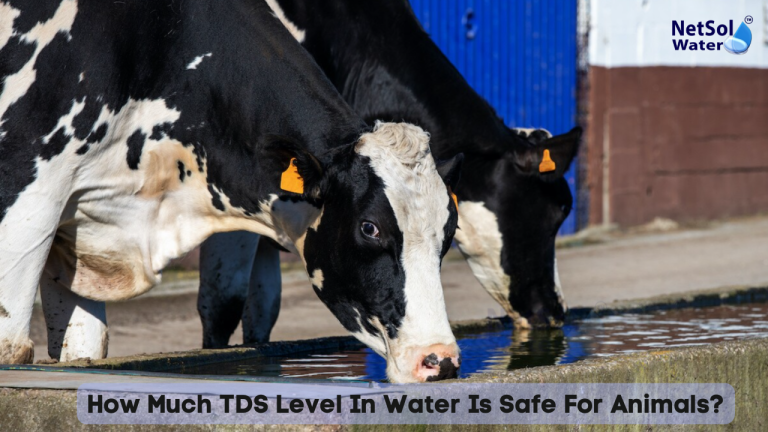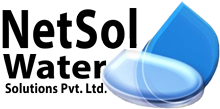
For animals to remain active as well as in good condition, clean water is essential. The mineral content of water is frequently higher in areas with hard water sources or arid climates. Total Dissolved Solids, or TDS, is a measure of that mineral content. The amount of TDS in water that is safe for animals must be known by farmers & pet owners. Elevated TDS levels can disrupt fluid balance, impair growth, & even damage digestion mechanism. Animals that have low TDS levels may be deficient in important nutrients. Therefore, it becomes very much essential to minimize the level of TDS in Water is safe for Animals.
The Significance of TDS in Water Is Safe for Animals
Minerals & salt compounds sodium chloride that rise when total dissolved solids are carried by water. These minerals, in little quantities, promote nerve & bone health. When consumed in excess, they impair performance along with hydration. Let’s examine some of the main characteristics of TDS in Water & how it affects animal health.
1) The Components of Total Dissolved Solids
Water accumulates tiny solid dispersed particles as it passes through rock together with dirt. In solution, the particles combine to form ions with both positive & negative charge. The elements like calcium & magnesium are common ions. They add hardness to the water. They also contain chlorine plus sodium. Animal kidney function is strained by excess salts. On the other hand, trace minerals support fluid equilibrium. Perceptive about the stability/balance that actually serves in determining TDS in Water is safe for animals.
2) The Impact of Elevated TDS on Animal Health
A high mineral load puts additional strain on the digestive system. Animals are deliberately being stressed upon to consume more water to get rid of extra salts from the body. Even when water intake appears to be high, this results in dehydration. In pets & cattle, it also results in loose stool. It may have an effect on the class & superiority of the covering shell & the laying of eggs in birds. In agricultural settings, those effects may impair growth rates & therefore product yield. The necessity to maintain TDS within the safe range stems from the recognition of such hazards.
3) Finding TDS Levels That Are Safe for Different Animal Types
The rate at which various species can withstand minerals varies. In contrast hen farms, cattle farms can survive better water hardness. Sensible quantities are essential for sheep to prevent them from kidney stones. Let’s examine a few instances that demonstrate safe TDS for various animal species.
4) Big livestock & Cattle
Water containing as much as three thousand mg/L of TDS can be consumed by cattle without causing serious harm. They adjust by increasing their water intake. But weight gain can be slowed by prolonged exposure above 2,000 mg/L. In dairy herds, it may also lower milk production. Testing kits for on-site mineral content measurement are designed by commercial RO plants. Farmers can maintain levels below risk criteria with the aid of those kits.
5) Chickens & Small Animals
The optimal TDS levels for chickens, geese, & turkeys are less than 1,500 mg/L. They consume less water after that. They mature more slowly & produce fewer eggs. The limit for sheeps & goats is close to 2,000 mg/L. Goats are more prone to accumulate kidney stones in their urine system if they over-consume that threshold. Owners can better control their mineral intake with routine testing.
Techniques for Controlling as well as Lowering TDS in Water is Safe for Animal Supplies
You can select a treatment strategy once you know the TDS in your water. Commercial RO Plant provides solutions that fit the budget & scale of farms. Let’s examine several popular techniques & their applications in the industry.
1) Water Treatment Plants such as Commercial RO Plants
Water is forced across a partially permeating allowing membrane by Commercial RO Systems. Up to 99.99 percent of the dissolved solids are almost removed by it. RO Plant are used for farmers at barn outlets or well-heads. RO plants need to be cleaned & powered on a regular basis. These modules are customized for remote sites by Commercial RO Plant. When grid access is still unpredictable, the modules are powered by solar energy.
2) Water Softening & Ion Exchange Technique for Clearing Impurities
Hazardous sodium & chloride are replaced by sodium-free minerals through ion exchange. When TDS is less than 3,000 mg/L, it functions at its finest. Unwanted ions are held in a resin bed while water flows past it. Subsequently, the water purification system implements a saline medium solution to restore the resin materials. Softeners with high flow rates are installed by commercial RO plant.
Conclusion
You can safeguard both fitness & performance by being aware of standard level of TDS in Water is safe for animals. Lab kits including portable measuring meters are appropriate for applying to test water. Next, if necessary, treat the water utilizing ion exchange units or RO plants. For more on acceptable TDS in Water being Safe for animals & to schedule a consultation, get in touch with Commercial RO Plant right now. Providing our much-adored pets with purest water alongside careful support by their owners is our top priority.
